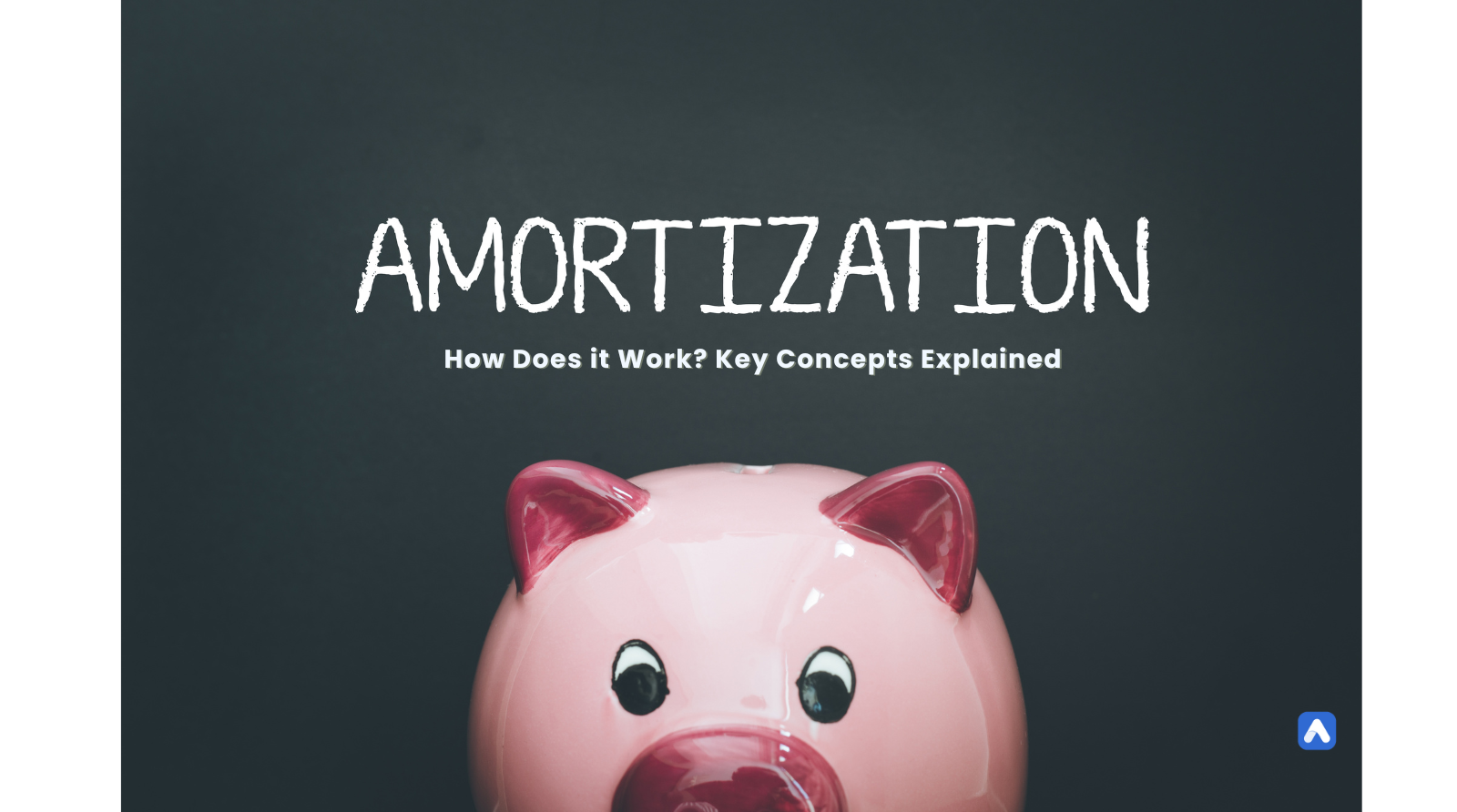How Does Amortization Work? Key Concepts Explained
Introduction to Amortization
What is Amortization ?
Amortization is a financial process where a debt or loan is gradually paid off over time, typically with regular payments. These payments are divided into two parts: principal and interest. The principal portion reduces the outstanding loan balance, while the interest portion is the cost of borrowing the money.
Importance of Amortization in Finance and Accounting
Amortization is a fundamental concept in finance and accounting. It provides a systematic way to manage debt and track the repayment process. For individuals, amortization is crucial for understanding mortgage payments and personal loan obligations. For businesses, amortization is essential for managing debt, calculating interest expenses, and accurately reflecting financial performance.
Common Scenarios Where Amortization is Used:
- Mortgages: The most common example of amortization is a mortgage, where homeowners make regular payments to pay off the principal and interest over a specified period.
- Auto Loans: Car loans are often amortized, with monthly payments gradually reducing the loan balance.
- Business Loans: Businesses may use amortization for loans to purchase equipment, expand operations, or finance other investments.
- Student Loans: Student loans are typically amortized, with borrowers making regular payments after graduation.
History of Amortization
Origins of the Amortization Concept: The concept of amortization can be traced back to ancient civilizations, where loans were often repaid with interest over time. However, the modern understanding of amortization as a systematic process emerged during the Renaissance.
Development of Amortization Practices in Finance: The development of financial institutions and the growth of credit markets in the 18th and 19th centuries led to the widespread adoption of amortization practices. The creation of standardized amortization schedules and calculation methods facilitated the efficient management of loans and debt.
Key Milestones in Amortization Standards and Policies:
- The rise of mortgage banking: The development of mortgage banking in the 19th century played a significant role in popularizing amortization for home loans.
- The Great Depression: The Great Depression led to reforms in lending practices, including stricter amortization requirements to prevent excessive debt burdens.
- The subprime mortgage crisis: The subprime mortgage crisis of 2007-2008 highlighted the risks associated with complex amortization schedules and adjustable-rate mortgages.
Types of Amortization
Loan Amortization: Mortgages, Personal, and Business Loans:
- Fixed-rate mortgages: These mortgages have a constant interest rate throughout the loan term, resulting in predictable monthly payments.
- Adjustable-rate mortgages (ARMs): The interest rate on ARMs fluctuates based on a benchmark index, which can lead to varying monthly payments.
- Personal loans: These loans can be amortized over a fixed term, with regular payments to pay off the principal and interest.
- Business loans: Businesses may use amortization for loans to purchase equipment, expand operations, or finance other investments.
Asset Amortization: Intangible Assets (e.g., Patents, Copyrights): Intangible assets, such as patents, copyrights, and trademarks, are amortized over their estimated useful life to allocate their cost to the periods in which they benefit the business.
Negative Amortization: What It Is and When It Occurs: Negative amortization occurs when the monthly payments are insufficient to cover the interest due on a loan, resulting in an increase in the outstanding balance. This can happen with certain types of loans, such as interest-only mortgages or adjustable-rate mortgages with low initial interest rates.
Amortization vs. Depreciation
Key Differences Between Amortization and Depreciation:
Amortization
Asset Type: Amortization is used for intangible assets (e.g., patents, copyrights).
Method: Amortization typically involves a straight-line method, where the cost is allocated evenly over the asset’s useful life.
Depreciation
Asset Type: Depreciation is used for tangible assets (e.g., equipment, buildings).
Method: Depreciation can use various methods, such as straight-line, declining balance, or units-of-production.
Why Intangible and Tangible Assets Are Treated Differently: Intangible assets have a finite useful life, as their value may decline over time. Tangible assets, on the other hand, may have a longer or indefinite useful life, and their value may be affected by factors such as wear and tear, obsolescence, and economic conditions.
Practical Examples of Both Concepts in Use:
Amortization
A company purchases a patent for $100,000 with an estimated useful life of 10 years. The company will amortize the patent over 10 years, recording an amortization expense of $10,000 per year.
Depreciation
A company purchases a piece of equipment for $50,000 with an estimated useful life of 5 years and a salvage value of $5,000. Using the straight-line method, the company will depreciate the equipment over 5 years, recording a depreciation expense of $9,000 per year.
Amortization Schedules
What is an Amortization Schedule? An amortization schedule is a table that shows the breakdown of each payment on a loan, including the portion allocated to principal and interest. It provides a clear understanding of how the loan balance is reduced over time.
Components of an Amortization Schedule (Principal, Interest, Time):
- Principal: The amount of the loan that is being repaid.
- Interest: The cost of borrowing the money.
- Time: The length of the loan term.
How to Read and Interpret Amortization Schedules: Amortization schedules typically show the payment number, the payment amount, the principal portion, the interest portion, and the outstanding loan balance. By analyzing these components, individuals and businesses can track their progress in paying off the loan and understand the impact of early or late payments.
Amortization Formula and Calculation Methods
Basic Formula for Calculating Amortization: The basic formula for calculating the monthly payment on an amortized loan is:
Monthly Payment = P * r * (1 + r)^n / ((1 + r)^n - 1)
Where:
- P = Principal amount
- r = Monthly interest rate (annual interest rate divided by 12)
- n = Number of monthly payments
How to Calculate Monthly Payments on an Amortized Loan:
- Determine the principal amount, annual interest rate, and loan term.
- Calculate the monthly interest rate by dividing the annual interest rate by 12.
- Calculate the number of monthly payments by multiplying the loan term in years by 12.
- Plug the values into the amortization formula to calculate the monthly payment.
Online Tools and Amortization Calculators: There are many online tools and calculators available that can help individuals and businesses calculate amortization schedules and estimate loan payments. These tools can be particularly useful for understanding the impact of different loan terms, interest rates, and payment options.
Fixed-Rate vs. Adjustable-Rate Loan Amortization
How Fixed-Rate Loan Amortization Works: With a fixed-rate loan, the interest rate remains constant throughout the loan term. This means that the monthly payments will also remain the same, making it easier to budget and plan for the loan repayment.
The Effect of Adjustable Rates on Amortization: With an adjustable-rate loan, the interest rate can change periodically, affecting the monthly payments. If the interest rate increases, the monthly payments will also increase, and vice versa. This can make it more difficult to predict future loan payments and can increase the risk of financial hardship if the interest rate rises significantly.
Pros and Cons of Each in Terms of Amortization:
- Fixed-rate loans: Pros: Predictable payments, lower interest rates in some cases. Cons: May have higher initial interest rates compared to ARMs.
- Adjustable-rate loans: Pros: Lower initial interest rates, potential for lower overall interest costs if rates decline. Cons: Uncertainty about future payments, risk of higher interest rates and increased monthly payments.
How Amortization Affects Loan Payments
Breakdown of Principal and Interest Payments Over Time: In the early years of an amortized loan, a larger portion of each payment goes toward interest. As the loan balance decreases, the principal portion of each payment increases. This is because the interest is calculated based on the outstanding loan balance, which is higher at the beginning of the loan term.
Early vs. Late Payments: How Amortization Impacts Loan Balance: Making early payments on a loan can significantly reduce the total interest paid over the life of the loan. This is because the outstanding loan balance is reduced more quickly, which means less interest is charged on the remaining balance. Late payments, on the other hand, can increase the total interest paid due to late fees and the accrual of additional interest on the unpaid balance.
The Role of Interest Rates in Amortization Schedules: The interest rate on a loan has a significant impact on the amortization schedule. A higher interest rate will result in higher monthly payments and a longer loan term, while a lower interest rate will result in lower monthly payments and a shorter loan term.
Benefits and Drawbacks of Amortization
Predictability of Payments in Amortized Loans: One of the main benefits of amortized loans is the predictability of the payments. This can make it easier to budget and plan for loan repayment.
Long-Term Financial Impact of Amortized Loans: Amortized loans can have a significant long-term financial impact, as they can help individuals and businesses build creditworthiness and achieve financial stability. By making regular payments on time, borrowers can improve their credit score, which can lead to better interest rates on future loans and other financial benefits.
Disadvantages of Negative Amortization and Balloon Payments: Negative amortization and balloon payments can be risky for borrowers. Negative amortization can result in a significant increase in the loan balance over time, making it difficult to repay the loan. Balloon payments require borrowers to make a large lump sum payment at the end of the loan term, which can be challenging if the borrower is unable to afford it.
Amortization of Intangible Assets
What Qualifies as an Intangible Asset? Intangible assets are assets that do not have a physical form, such as patents, copyrights, trademarks, goodwill, and franchises. These assets provide value to a business, but they are not tangible assets that can be touched or seen.
Rules and Regulations for Amortizing Intangible Assets (e.g., IRS Guidelines): The IRS provides specific guidelines for the amortization of intangible assets. Generally, intangible assets must be amortized over their estimated useful life, which is typically 15 years or less. However, certain intangible assets, such as goodwill, may not be amortized at all.
Case Study: Amortization of Goodwill and Patents:
Goodwill
Goodwill is the intangible asset that represents the value of a business beyond its tangible assets. It is typically not amortized, but it is subject to an annual impairment test to determine if its value has declined.
Patents
Patents are legal rights granted to inventors to exclude others from making, using, selling, or importing their invention. Patents are typically amortized over their estimated useful life, which is often 20 years.
Amortization in Financial Reporting and Accounting
How Amortization Affects Financial Statements: Amortization is reflected in the financial statements of a business. It is recorded as an expense on the income statement, which reduces the business’s net income. On the balance sheet, amortization is accumulated in a contra-asset account, which reduces the value of the intangible asset.
Recording Amortization Expenses in the Income Statement: Amortization expenses are typically recorded on a monthly or quarterly basis. The amount of the expense is calculated by dividing the cost of the intangible asset by its estimated useful life.
Impact on Profitability and Taxation: Amortization expenses can have a significant impact on a business’s profitability and taxation. By reducing net income, amortization expenses can lower a business’s taxable income, resulting in lower tax liability. However, it is important to note that amortization expenses do not represent actual cash outflows.
Amortization and Tax Implications
Tax Benefits of Amortizing Business Assets: Amortizing business assets can provide significant tax benefits. By deducting amortization expenses on the income statement, businesses can reduce their taxable income and lower their overall tax liability.
IRS Rules on Amortization Deductions: The IRS has specific rules regarding the amortization of business assets. These rules may vary depending on the type of asset and its estimated useful life.
Impact of Amortization on Personal and Business Tax Filing: Amortization can have a significant impact on both personal and business tax filing. Individuals who own businesses can deduct amortization expenses on their personal tax returns. Businesses must report amortization expenses on their corporate tax returns.
Common Mistakes in Understanding Amortization
Misinterpreting Amortization Schedules: One common mistake is misinterpreting amortization schedules. It is important to understand that the monthly payments on an amortized loan are not simply divided equally between principal and interest. The allocation of principal and interest changes over time, with a larger portion of each payment going toward interest in the early years of the loan.
Confusing Amortization with Simple Interest Loans: Another common mistake is confusing amortization with simple interest loans. Simple interest loans do not involve amortization, as the interest is calculated only on the principal amount. Amortized loans, on the other hand, involve the repayment of both principal and interest over time.
Failing to Consider Total Interest Costs Over Time: When comparing different loan options, it is important to consider the total interest costs over the life of the loan. While a loan with a lower initial interest rate may seem more attractive, it is essential to compare the total interest paid over the entire loan term.
Tools and Software for Amortization
Popular Amortization Software for Individuals and Businesses: There are many popular amortization software programs available for individuals and businesses. These programs can help users calculate amortization schedules, track loan payments, and analyze the financial impact of different loan options. Some popular examples include Quicken, Excel, and online amortization calculators.
Online Resources and Calculators: In addition to software programs, there are also many online resources and calculators available for calculating amortization. These tools can be particularly useful for individuals who do not have access to specialized software.
Tips for Choosing the Right Amortization Tool: When choosing an amortization tool, it is important to consider the specific needs of the user. Factors to consider include the complexity of the loan, the desired level of detail, and the ease of use of the tool.
The Future of Amortization
How Technology is Changing Amortization Practices: Technology is rapidly changing the way amortization is practiced. Digital tools and online platforms are making it easier for individuals and businesses to access and manage loan information, calculate amortization schedules, and make payments.
The Impact of Regulatory Changes on Loan Amortization: Regulatory changes can have a significant impact on loan amortization practices. For example, changes in interest rate regulations or lending standards can affect the terms of loans and the amortization schedules associated with them.
Trends in Asset Amortization and New Accounting Standards: There are ongoing trends in asset amortization and new accounting standards that are shaping the way intangible assets are valued and amortized. These trends can have a significant impact on the financial reporting of businesses.
By understanding the concepts of amortization, individuals and businesses can make informed decisions about their financial obligations and manage their debt effectively.
Conclusion
The Role and Impact of Amortization in Financial Management
Amortization is a cornerstone of financial planning and debt management, offering a systematic approach to repaying loans and allocating the cost of intangible assets over time. Its importance spans both personal and business finance, providing predictability, transparency, and long-term financial stability.
Key Insights:
Predictability and Transparency :
Financial Implications :
Challenges and Risks :
Tax Benefits :
Technological Advancements :
Regulatory and Market Trends :
Future Outlook:
As financial markets evolve and technology advances, amortization will remain a critical tool for managing debt and assets. Innovations in fintech and regulatory updates will likely refine amortization practices, making them more adaptable to changing economic conditions. Businesses and individuals must stay informed about these developments to optimize their financial strategies and ensure long-term stability.
Ultimately, understanding amortization empowers borrowers and businesses to make sound financial decisions, balancing short-term needs with long-term goals. By leveraging amortization effectively, individuals and organizations can achieve greater financial security, manage debt responsibly, and maximize the value of their investments.






